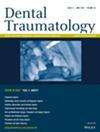The pattern of maxillofacial fractures associated with rollover accidents: A 7-year retrospective study
Abstract
Background/Aim
This study aimed to assess the incidence and pattern of maxillofacial fractures and related demographic data in the victims of rollover crashes.
Patients and Methods
This retrospective study was based on medical records of patients who sustained maxillofacial injuries following rollover accidents. Investigated data included age, gender, accident date and time, accident cause, seat belt usage, airbag deployment, road type, anatomical location of the facial fracture, and treatment approach.
Results
Among the 147 patients who met the inclusion criteria, the most prevalent age groups were 20–30 (36.7%) and 30–40 (32.7%) years, with a mean age of 33.6 ± 9.7 years. The male-to-female ratio was 6:1. Most crashes occurred in March, August, and July. These accidents involved 69.4% light vehicles and 39.6% heavy vehicles. The leading causes of rollover crashes were speeding (58.5%) followed by distracted driving (21.1%) and traffic rule violations (13.6%). The most prevalent injuries were fractures of the maxillary sinus wall (40.8%), nasal bones (39.5%), zygomaticomaxillary complex (36.1%), and the mandible (32.6%). Surgical intervention was necessary for 44.2% of patients, while 12.9% of cases underwent close reduction, and 42.9% did not require any surgical intervention. The occurrence of nasal bone fractures was significantly lower in cases where seat belts were worn and zygomatic arch fractures were less frequent in incidents with airbag deployment.
Conclusions
In rollover crashes, the midface is the most vulnerable anatomical location. Utilization of seat belts and airbag deployment has the potential to prevent nasal bone and zygomatic arch fractures.

 求助内容:
求助内容: 应助结果提醒方式:
应助结果提醒方式:


